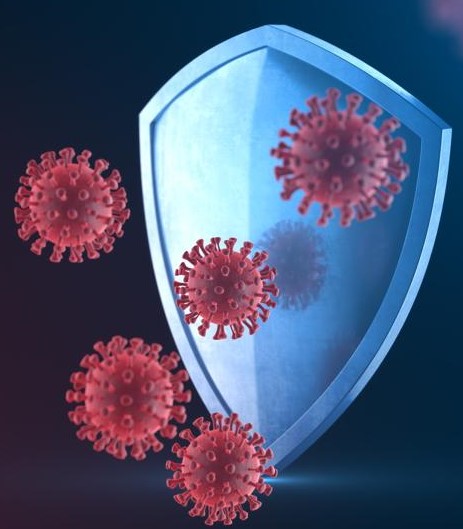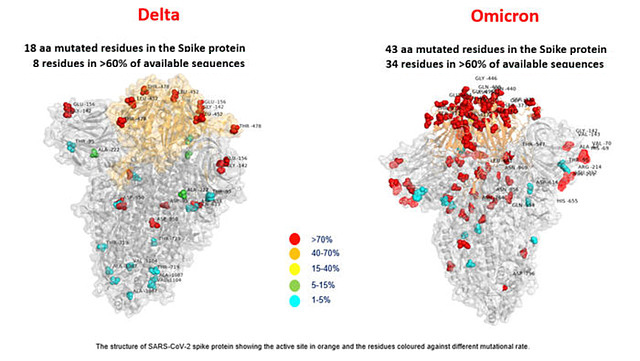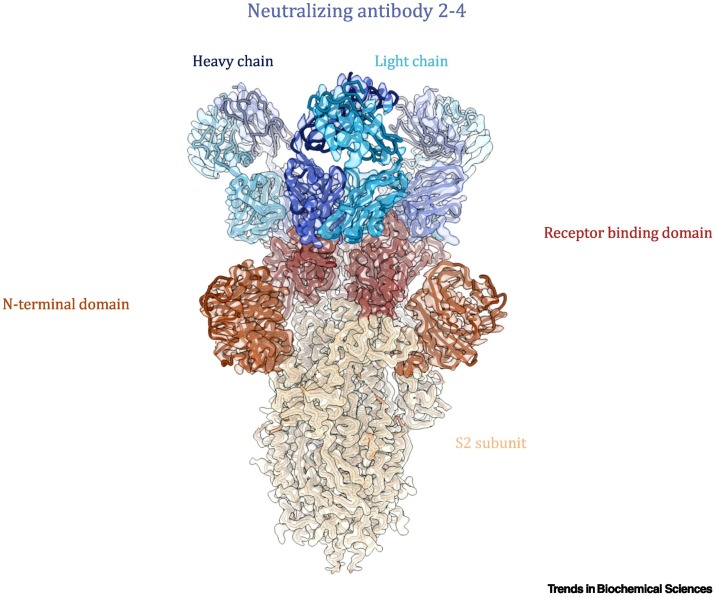Microbiome and Complex Disease
Cutaneous manifestations
Myocarditis after vaccine vs infection
An imbalance between microorganisms in human microbiome is responsible
Gamification approaches to nutrition education offer advantages for
preventing disease over traditional persuasion methods.
Read more >>>
Flavin-containing monooxygenase 3 (FMO3) enzyme is a seemingly insignificant enzyme that normally converts fishy-smelling trimethylamine (TMA) into a neutral trimethylamine-N-oxide (TMAO).
The amounts of this highly-specialized detoxifying enzyme are highly variable. It depends on the age,
sex hormones, infections (estradiol and testosterone, hepatitis virus have been found to reduce FMO3 capacity),
obesity traits and diseases such as diabetes. The difference can be up to 20-fold between individuals. Mutations in the FMO3 gene cause low metabolic capacity associated with the disorder trimethylaminuria (TMAU) that attracts little biomedical interest. This condition, however, might matter more than it seems. Individuals differ in their susceptibility to viral infections and genes contribute to the risk score. Less than 10% of humans infected with Mycobacterium tuberculosis develop TB, partially because of polymorphism in Tyrosine kinase (TYK2, P1104A) also responsible for severe COVID-19. Early in the pandemic, it was discovered that SARS-CoV-2 infection is dependent on the ACE2 receptor for cell entry and the serine protease TMPRSS2 for spike protein priming. ACE2 expression, indeed, influences COVID-19 risk and a rare variant located close to this gene was found to confer protection against COVID-19, possibly by decreasing ACE2 expression. Interestingly, FMO3 is one of the few genes with expression correlated to ACE2 [Sungnak et al, 2020] along with genes associated with immune
functions. Coronavirus disease is associated with increased risk of thrombotic events. According to recent research, low levels of FMO3 protect against thrombosis [Shih et al, 2019] while some FMO3 mutations confer higher risk [Oliveira-Filho et al, 2021]. FMO3 rs1736557 might increase the anti‐platelet efficacy of clopidogrel [Zhu et al, 2021]. Genetic risk can be mediated by gut microbiota [Gabashvili, 2020]. There are also associations with other diseases such as diabetes, renal and cardiovascular conditions increasing risk of severe COVID-19. Studying trimethylaminuria-like conditions might help in developing strategies for prevention and therapy of other diseases, including COVID-19. Our COVID-19 disease and vaccines study [NCT04832932, Gabashvili, 2021] compares side-effects of vaccines and clinical course of infections (including vaccine breakthroughs) in several cohorts including MEBO and TMAU. You can help by enrolling and participating in this online survey in English or Spanish. REFERENCES Andreakos E, Abel L, Vinh DC, Kaja E, Drolet BA, Zhang Q, O’Farrelly C, Novelli G, Rodríguez-Gallego C, Haerynck F, Prando C. A global effort to dissect the human genetic basis of resistance to SARS-CoV-2 infection. Nature immunology. 2021 Oct 18:1-6. Gabashvili IS. Cutaneous Bacteria in the Gut Microbiome as Biomarkers of Systemic Malodor and People Are Allergic to Me (PATM) Conditions: Insights from a Virtually Conducted Clinical Trial. JMIR Dermatology. 2020 Nov 4;3(1):e10508. Gabashvili IS. Community-Based Phenotypic Study of Safety, Tolerability, Reactogenicity and Immunogenicity of Emergency-Use-Authorized Vaccines Against COVID-19 and Viral Shedding Potential of Post-Vaccination Infections: Protocol for an Ambispective study. medRxiv 2021.06.28.21256779; doi: https://doi.org/10.1101/2021.06.28.21256779 Liu W, Wang C, Xia Y, Xia W, Liu G, Ren C, Gu Y, Li X, Lu P. Elevated plasma trimethylamine-N-oxide levels are associated with diabetic retinopathy. Acta Diabetologica. 2021 Feb;58(2):221-9. Janmohamed A, Dolphin CT, Phillips IR, Shephard EA. Quantification and cellular localization of expression in human skin of genes encoding flavin-containing monooxygenases and cytochromes P450. Biochemical pharmacology. 2001 Sep 15;62(6):777-86. Oliveira-Filho AF, Medeiros PF, Velloso RN, Lima EC, Aquino IM, Nunes AB. Trimethylaminuria and Vascular Complications. Journal of the Endocrine Society. 2021 Apr;5(Supplement_1):A313-4. Zhu KX, Song PY, Li MP, Du YX, Ma QL, Peng LM, Chen XP. Association of FMO3 rs1736557 polymorphism with clopidogrel response in Chinese patients with coronary artery disease. European Journal of Clinical Pharmacology. 2021 Mar;77(3):359-68.
Sungnak W, Huang N, Bécavin C, Berg M, Queen R, Litvinukova M, Talavera-López C, Maatz H, Reichart D, Sampaziotis F, Worlock KB. SARS-CoV-2 entry factors are highly expressed in nasal epithelial cells together with innate immune genes. Nature medicine. 2020 May;26(5):681-7.
Shih, D.M., Zhu, W., Schugar, R.C., Meng, Y., Jia, X., Miikeda, A., Wang, Z., Zieger, M., Lee, R., Graham, M. and Allayee, H., 2019. Genetic deficiency of Flavin-containing monooxygenase 3 (Fmo3) protects against thrombosis but has only a minor effect on plasma lipid levels—brief report. Arteriosclerosis, thrombosis, and vascular biology, 39(6), pp.1045-1054.
REFERENCES
Environmental factors contribute to the spread of microorganisms causing diseases. Sunlight can kill viruses in minutes, while increased air pollution could be one of the risk factors of more severe outcomes. Humidity is also thought to be important. A team of scientists from Northeast US analyzed COVID-19 cases from 2669 counties and found that cold and dry weather and low levels of ultraviolet radiation are moderately associated with increased SARS-CoV-2 transmissibility, with humidity playing the largest role. 17.5% of the virus’ reproductive number was attributable to meteorological factors, with temperature accounted for 3.73%, humidity accounted for 9.35%, and UV radiation for 4.44%. This is in line with earlier findings about SARS-CoV-2 being less stable at higher humidity and warmer temperatures in human nasal mucus and sputum. Like in previous environmental studies, however, these fractions were not the same everywhere and were higher in northern counties. REFERENCES Aganovic A, Bi Y, Cao G, Drangsholt F, Kurnitski J, Wargocki P. Estimating the impact of indoor relative humidity on SARS-CoV-2 airborne transmission risk using a new modification of the Wells-Riley model. Building and environment. 2021 Aug 23:108278. Ma Y, Pei S, Shaman J, Dubrow R, Chen K. Role of meteorological factors in the transmission of SARS-CoV-2 in the United States. Nature Communications. 2021 Jun 14;12(1):1-9.
The COVID-19 Back-to-normal study was initiated in January 2021 as an effort of a tight-knit neighborhood to help each other avoid the virus and vaccinate safely. Later the research protocol was approved by MEBO Research IRB and the study was open to other communities around the world. By now, we have over 600 participants. Early results of the study in MEBO/PATM community, based on the replies of the first 26 enrollees, showed that while reactions to vaccine were similar to the general population, experiences with COVID-19 infections were not - 2 individuals were not able to avoid the disease in this group, and both of them experienced long term effects. As of today, we have stories from 41 members of MEBO/PATM community and 6 different vaccines: AstraZeneca-Oxford, Johnson & Johnson’s single-shot, Moderna, Pfizer-BioNTech, Sinovac Biotech’s CoronaVac and BBIBP-CorV, also known as the Sinopharm vaccine. Why is MEBO/PATM community more susceptible to long COVID? A new study argues that long-haulers might actually be experiencing an attack of fatigue-inducing Epstein-Barr virus (EBV, a member of herpesvirus family HHV-4) that was lying dormant in their bodies. For this study, Gold and his colleagues analyzed blood of 30 people with chronic COVID (out of 185 COVID survivors). 20 out of these 30 carried high levels of EBV antibodies. Vaccines were shown to reactivate viruses too, in much rarer cases. As was demonstrated for Pfizer vaccine that woke up another herpes virus, chickenpox herpes-zoster (HHV-3), that causes shingles when reactivated (this happened to 1% of patients with autoimmune inflammatory rheumatic diseases). Herpes simplex (HSV-1) can be also kept in remission by a healthy immune system and can be also reactivated by COVID-19. MEBO and PATM symptoms could arise following an infection. Perhaps SARS-CoV-2 can reactivate the old viruses that caused these symptoms to begin with? Community immunity (also known as herd immunity) protects everyone. We hope that MEBO/PATM community stays COVID-free and safe.
for many complex diseases >>>
Cutaneous manifestations >>>
The risk of myocarditis
may be higher following vaccination than infection >>>
We report a case from an ongoing COVID-19 vaccines long-term safety study: a
fatal SARS-CoV-2 breakthrough infection occurring after a serious adverse reaction to ChAdOx1 nCov-19 vaccine.
>>>
FMO3 and COVID-19
Survey in
English
and in
Spanish
Gamified eating
Posts on Dec.1, Dec.10, Dec.11, Dec. 15, Dec. 16, Dec.25
The Omicron
November 26, 2021
A Fresh Air Look at Ventilation
September 7, 2021
August 12
August 12, 2021
Viruses and Vaccines
July 2, 2021
Other related blog posts
June 26, 2021:
COVID-19 and vaccine reactogenicity
Adverse reactions to COVID-19 vaccines are influenced by a multitude of factors, many of which can be anticipated and alleviated. A certain level of inflammation is needed to trigger an effective adaptive immune response, but both environment and genetic makeup determine who is more likely to experience particular symptoms after infection and from the vaccine.
March 20, 2021:
Anaphylaxis to COVID-19 vaccines
:
What do we know about anaphylactic reactions to Astrazeneca, Pfizer, Moderna, Johnson & Johnson & other COVID-19 vaccines?
Read more
January 20, 2021:
Irritable Bowel and COVID-19
:
Abdominal pain is less widely known as a symptom of COVID-19,
yet it is - along with shortness of breath and confusion -
a potential sign of the most severe form of COVID-19.
In children, having gastrointestinal symptoms
was more frequently associated with severe and critical phenotype.
Read more






